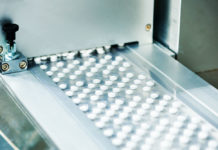assisting researchers and removing some of the existing obstacles they encounter when trying to assess specific patterns of substance use.
“We had a contest last year, and we’re having another one now to award companies money if they can develop a biosensor to detect the level of alcohol in your body,” White said. “Because if you can wear a biosensor, look at your wrist and it tells you that you are at .05 or .08, that is more valuable to me than your recollection of how much you drank.”
He affirmed that these innovations are currently happening and getting more and more refined, and added that very soon these, possibly groundbreaking, technological advances will be on the market.
“Unfortunately, there are still many complicating factors when we do research on patterns of consumption, but those issues we have will become be less of a hindrance for science once these biosensors come out — and they are on their way out.”
White’s team highlighted that further investigations are necessary before researchers can learn the importance of including specific questions about peak alcohol consumption in screenings and assess other risks of extreme binge drinking.
Nonetheless, the researchers noted that these findings should be not considered by professionals but by communities in general.
“Findings from a study like this serve as fodder for discussions between parents and teens, or between doctors and patients,” White concluded. “We want to remind people that alcohol can be a part of a healthy lifestyle if consumed wisely. But once you start getting to that binge threshold, alcohol suddenly becomes a very dangerous drug.”
















